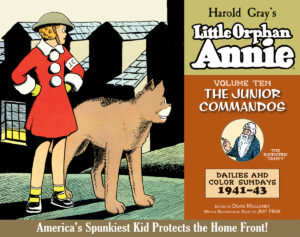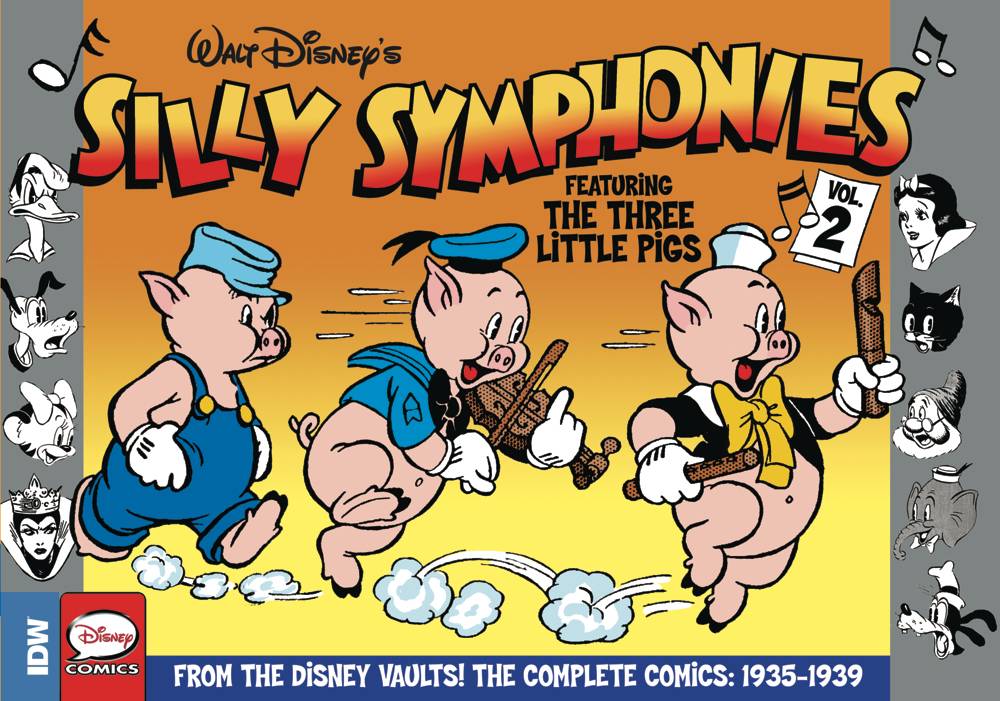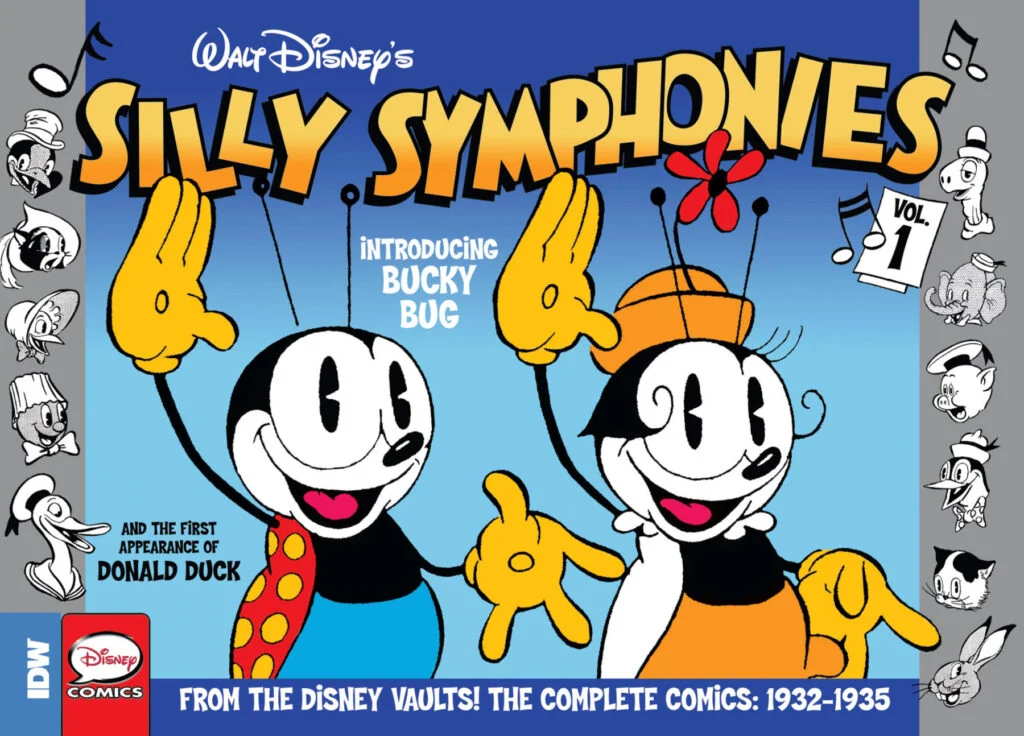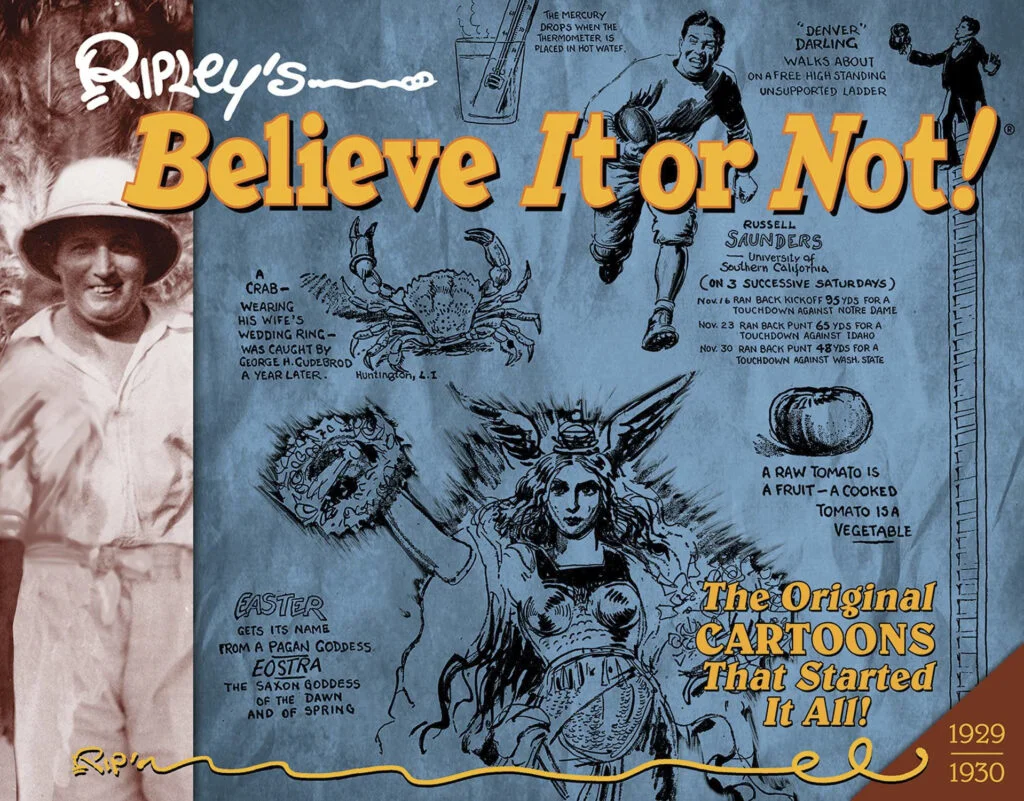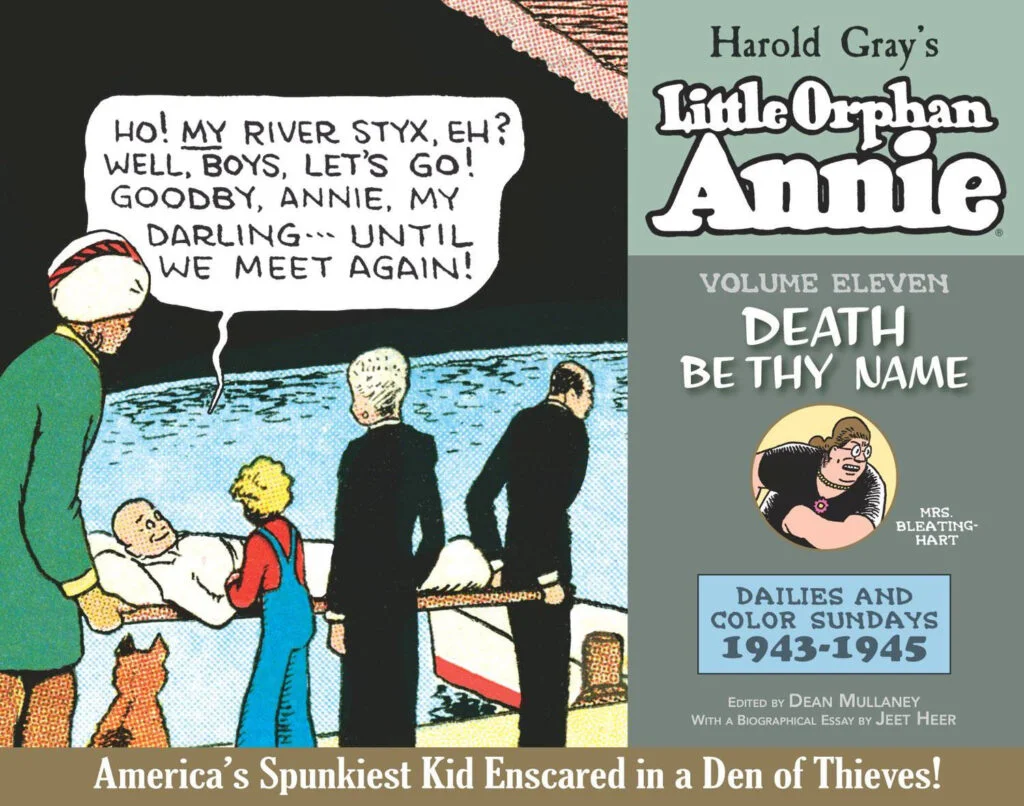America’s spunkiest kid is hospitalized after a car crash, has to fight off a dope pushing doctor, meets “Crazy Kate” (who’s not all that crazy!) and helps the bearded old man named Zaney keep his secret formula out of Nazi hands. When America enters the Second World War, Annie protects the home front by forming the Junior Commandos, a group that inspired tens of thousands of real life children to collect newspapers, scrap metal, and other items needed for the war effort. The fictional “Colonel Annie,” meanwhile, finds herself face to face with fifth columnists and a Nazi submarine! Daddy Warbucks, true to his name, is back making munitions and leads a mysterious army overseas. And that’s just for starters…in Volume Ten of The Complete Little Orphan Annie. Including dailies and Sundays from November 24, 1941 through August 7, 1943.
- Library Of American Comics, May 2014
- ISBN 978-1-61377-951-4
- 11″ x 8.5″, 296 pages, hardcover
- $49.99 USD
- Order online: Amazon, eBay
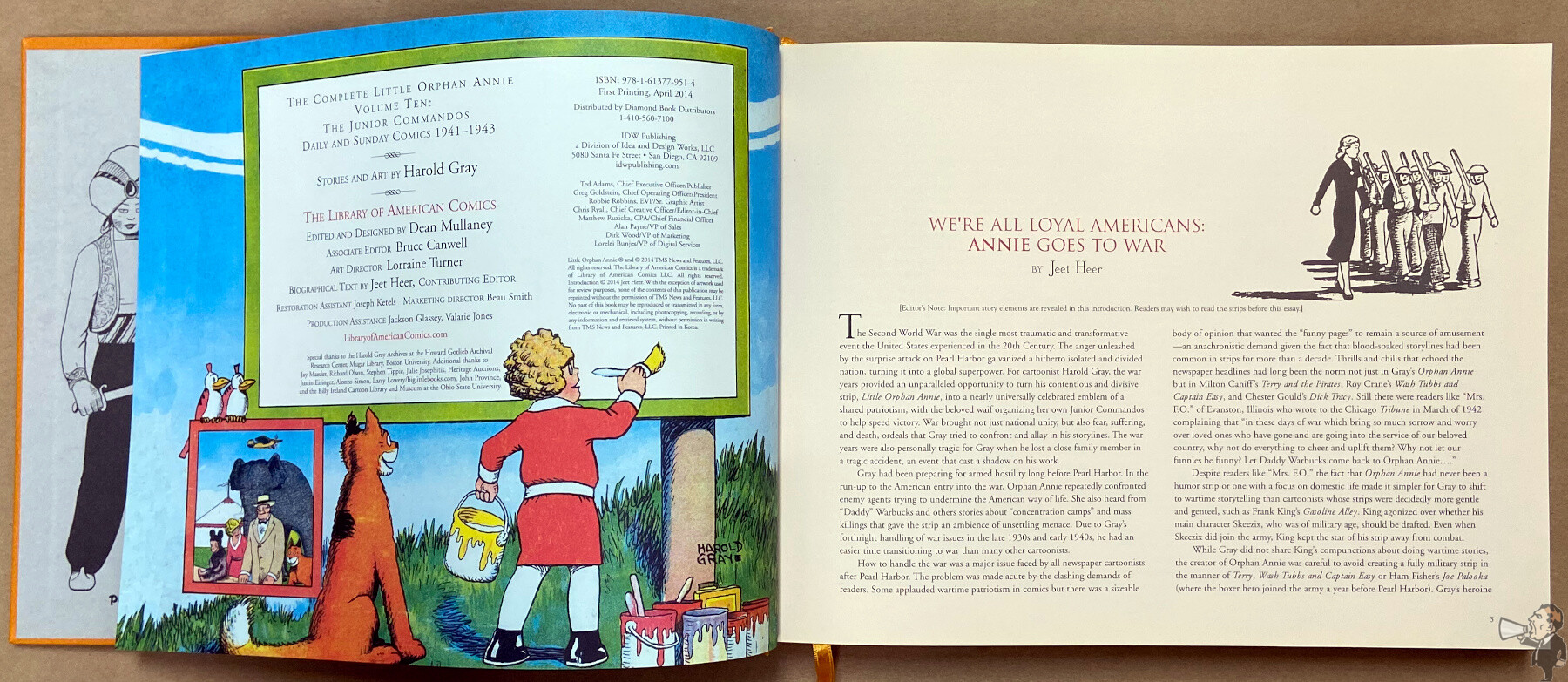
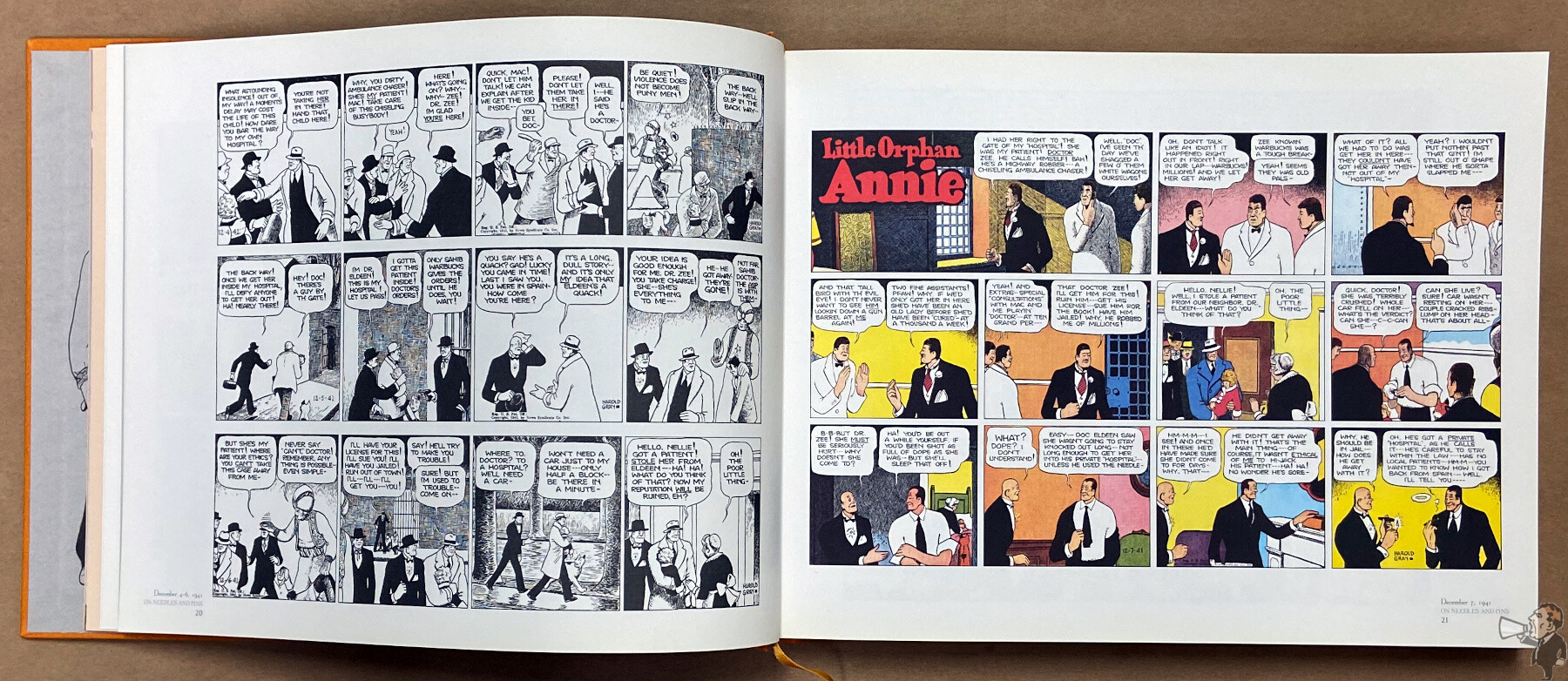

We start this volume with a familiar motif: “Daddy” leaves Annie in the care of someone else and disappears. This time it’s Dr. Zee, whom she spends time with after a car accident and a near-miss with the nefarious Dr. Eldeen. Annie then takes a back seat to Dr. Zee’s adventures around town as he wins the trust of the poor and downtrodden, especially turning around the life of an old school friend, Crazy Kate. It’s a heartwarming tale of redemption and perception, what we come to expect whenever Annie winds up in a small town. Villainy is required so we do see a conflict between Dr. Eldeen and Annie, but more so the local “padre” as Gray continues to work elements of religion into the strip. We’re also treated to daily promotions War Stamps and War Bonds, in a not-so-subtle sale pitch.
The second story is brief, with a dedicated focus on Annie’s war efforts. She forms the Junior Commandos, mobilizing the town children for collecting materials such as iron, paper, scrap, etc., and selling war stamps and bonds. Gray delineates the townspeople into two groups: those who assist the war effort and those that don’t. Annie gets a town directory and marks off those people who donate materials or buy war stamps: those who refuse to assist are marked in yellow.
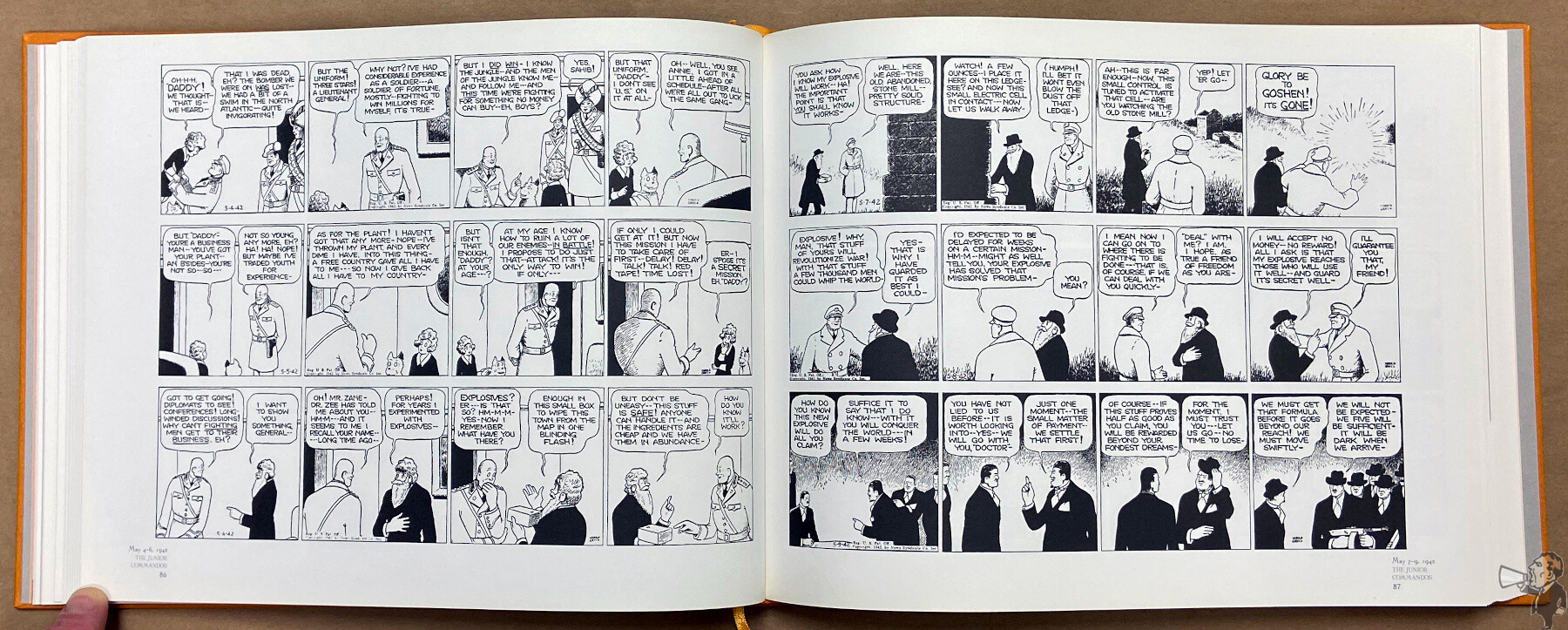
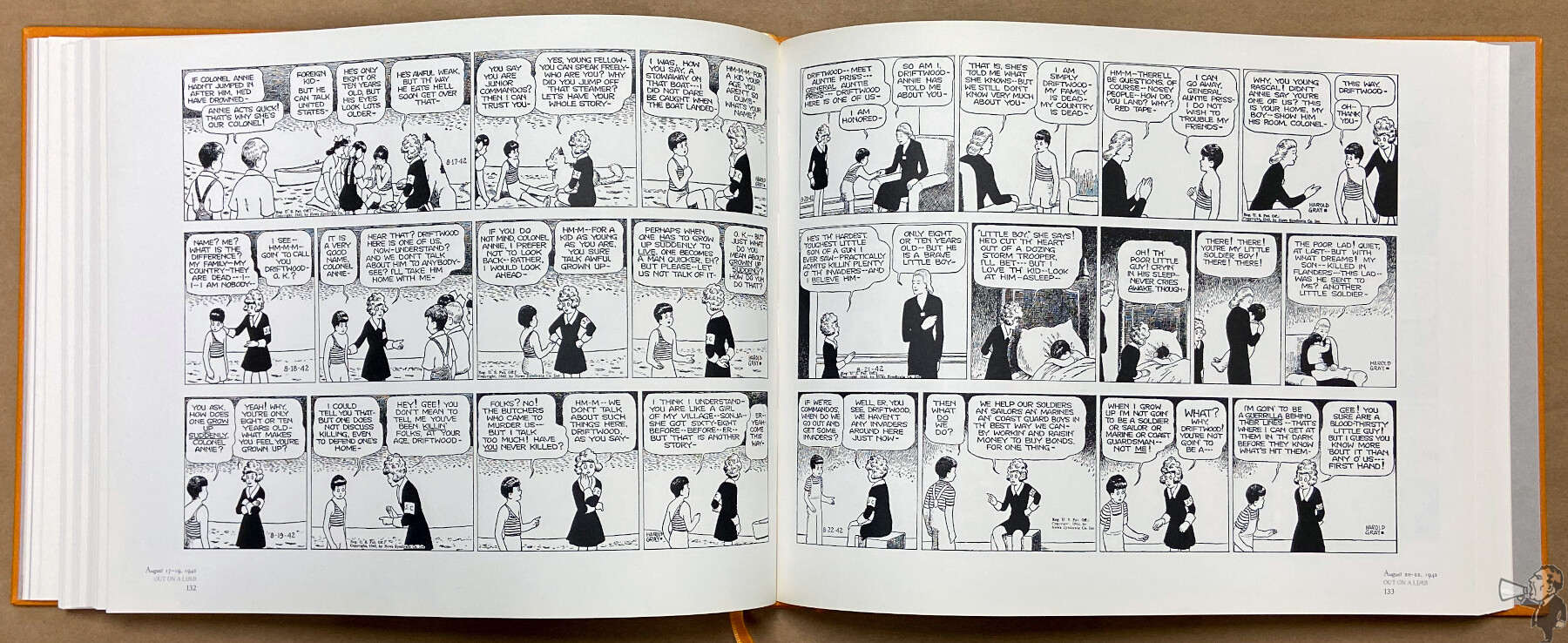

Chapter three is all about dealing with the war at home. Annie is driving the Junior Commandos to do everything possible, and the community rallies around them. Cast members go off to war and return home, and the feelings and commitment of each sacrifice are examined. There’s a Sunday on page 140 dealing with Sam from the last volume, again with multiple Christ references; it’s pretty strong. He was taken to a hill for execution, along with two thieves from the jail. And just as strong is Gray’s racism and hatred of the Japanese, as his “slant-eyed baboons” dialogue from page 170 illustrates. Amongst all that Annie has the time to play matchmaker, albeit unknowingly, for a pair of old friends. This was needed to lighten the tone ever so slightly.
The last story has Annie lured to a castle in the hopes of capturing “Daddy”. She encounters a chapter of the Junior Commandos, a spooky old castle with lots of secret passageways, and a Nazi submarine base. Through some aggressive action, Annie and the crew do battle with various Nazis and their American spymaster Schuft. We also have Big George added to the cast, a Serbian immigrant and former spy, a John Wick/MacGuyver of the 1940s. No one has any hesitation for death and destruction on either side. The Nazis all speak with accents and use German, but at no point does Gray make racist references to them as he did the Japanese earlier.
Not a lot of “new” words from this volume. Someone is called a popinjay, a vain or conceited person who dresses extravagantly.
Gray’s art style continues on course, with elongated and rounded physiques, and large hands on the men. It may just be me, but Annie’s hair appears to be getting taller. The art takes a major loss in the fourth story, as Gray uses less detailed figures and minimizes backgrounds and environments.


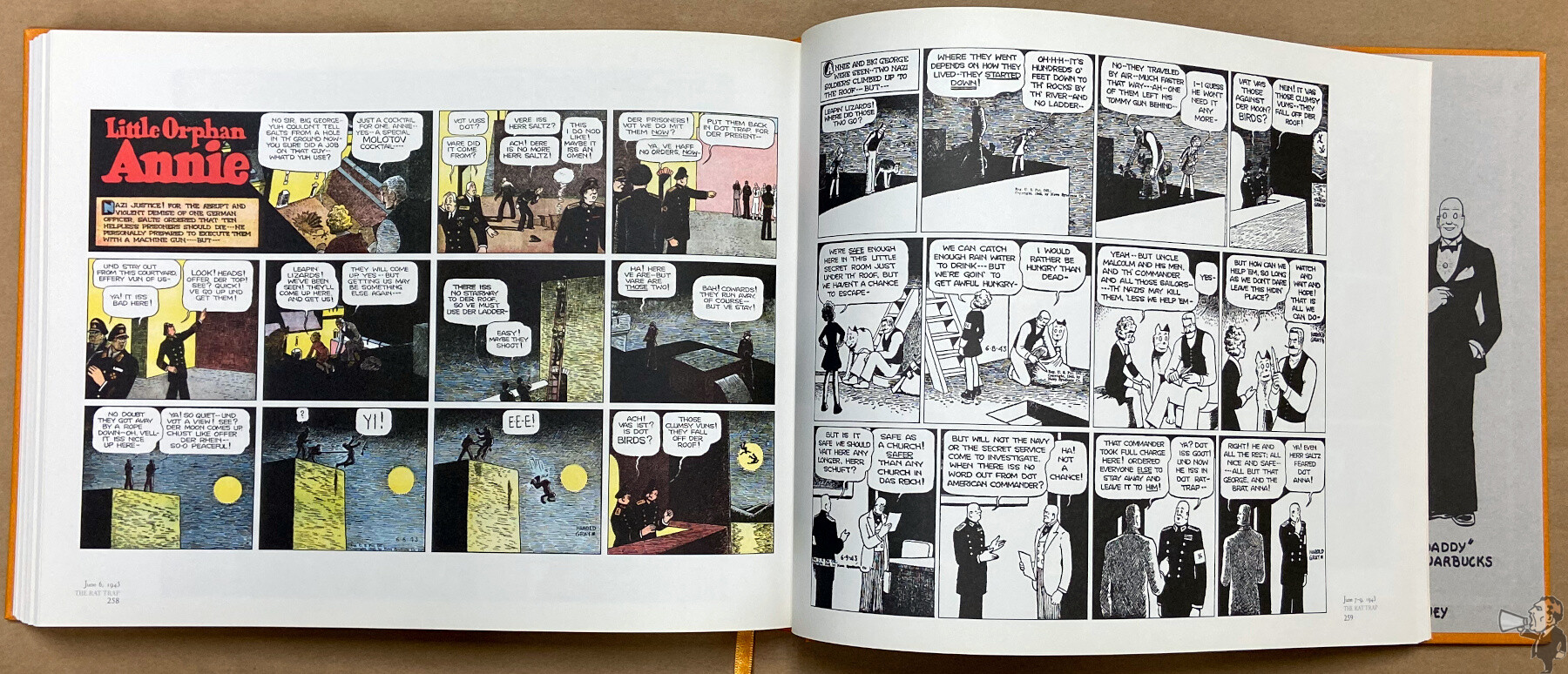
Reproduction is excellent on the bulk of the strips, but a few dailies are dark and a few Sundays are a bit washed out, all from the last story. The line’s design is carried forward in this volume. A sewn binding of heavy matte paper stock. And the silk ribbon always deserves praise!
I thoroughly enjoyed Heer’s essay after completing the strips. He casts some light on possible reasons the fourth story is lacking in artistic merit, along with War influences on Gray and the strip.

